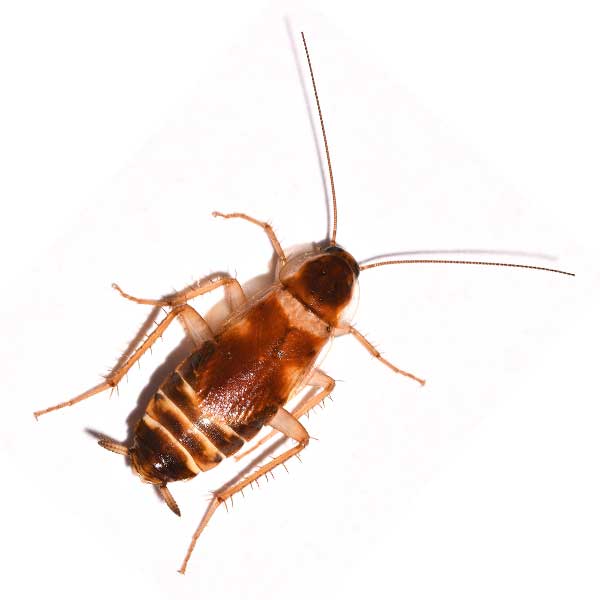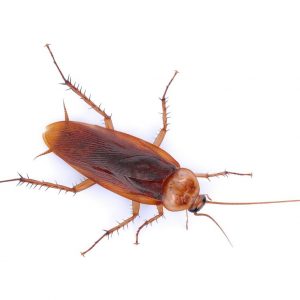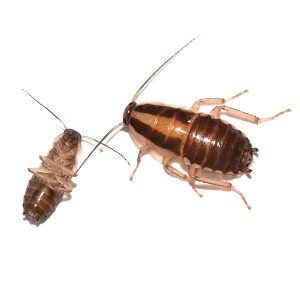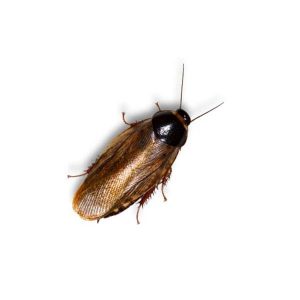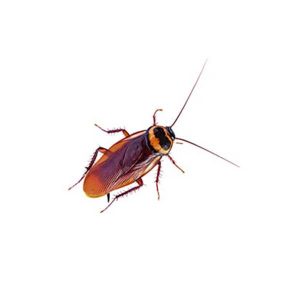Brown-Banded Cockroaches in Georgia
Brown-banded roaches are light to medium brown in color with darker bell shapes on the area directly behind their head (pronotum). They also have brown stripes across their bodies as juveniles, and across their wings as adults. Brown-banded roaches are some of the smallest roaches you will find infesting structures maxing out around 1.1-1.5 cm. Brown-banded roaches can and will eat almost anything. They will eat garbage, crumbs, nylon, cellulose material (including wallpaper and its glue), curtains, and much more. They tend to avoid water sources inside the home unlike many of the other roaches that venture or live inside.
Brown-Banded Cockroach Habitat
These roaches are most commonly found inside the home. They prefer warmer temperatures and higher elevations when inside and are commonly seen around the ceiling or crown molding. Much like German roaches, these roaches can be in pantries, cabinets, appliances, and wall voids. Living areas that provide some sort of food source, like crumbs or wallpaper, are a common habitat for brown-banded roaches.
Brown-Banded Cockroach Behaviors, Threats, or Dangers
These roaches behave in many of the same ways as German roaches in terms of hiding out of sight. They are nocturnal and are not seen often during the day except when they are foraging for food. The most common way these roaches make their way into the home is by bringing in old furniture, but they can also make their way inside using appliances, fresh fruits or veggies, boxes, etc. that are brought into the home. In addition to being up high, they can also hide behind pictures, mirrors, or other items that are hanging on the wall.
Much like German roaches, these roaches have been found to be a contributing factor of asthma in young children. Furthermore, they have been shown to spread many diseases and can pose a real health problem if not treated properly. Like german roaches they leave feces around areas where they congregate; however, instead of being in cabinets, the feces is more likely to be up near the ceiling or behind items hanging on the wall.
If you suspect a brown-banded cockroach infestation, contact a professional cockroach exterminator for help.

